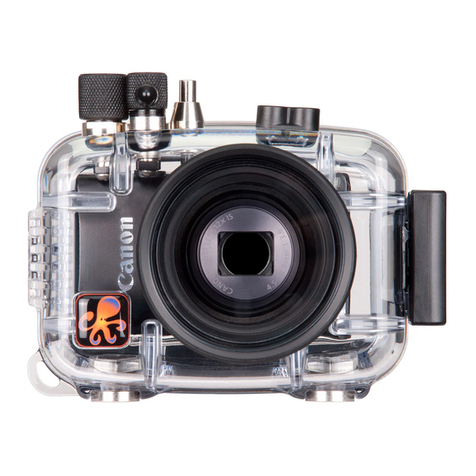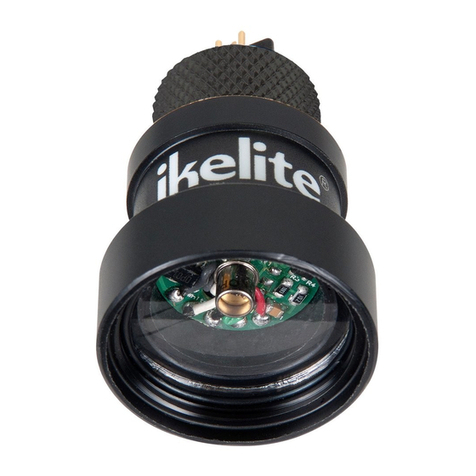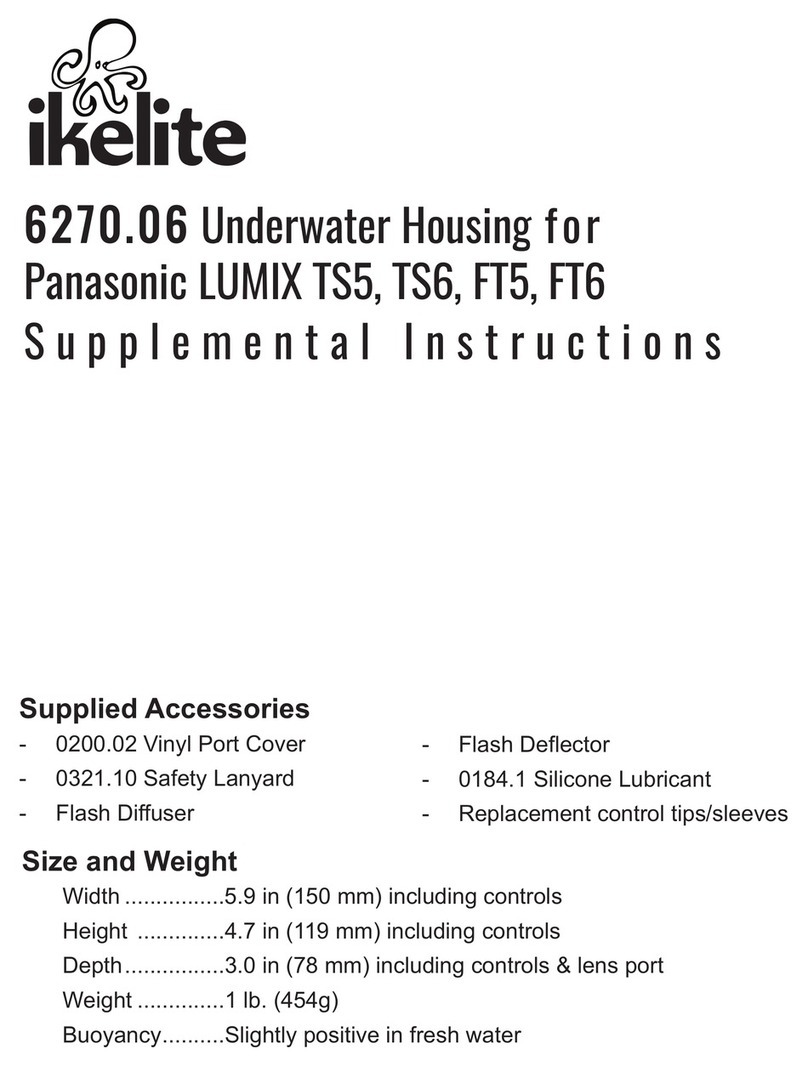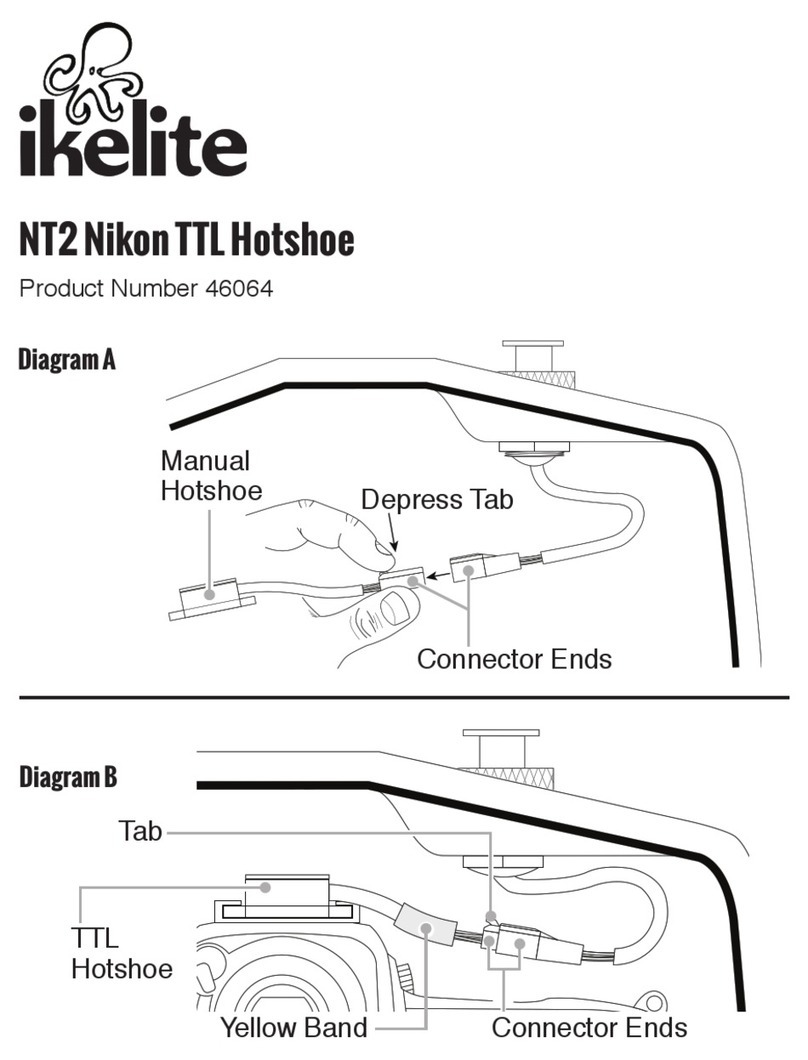Ikelite 6842.35 User manual
Other Ikelite Camera Accessories manuals
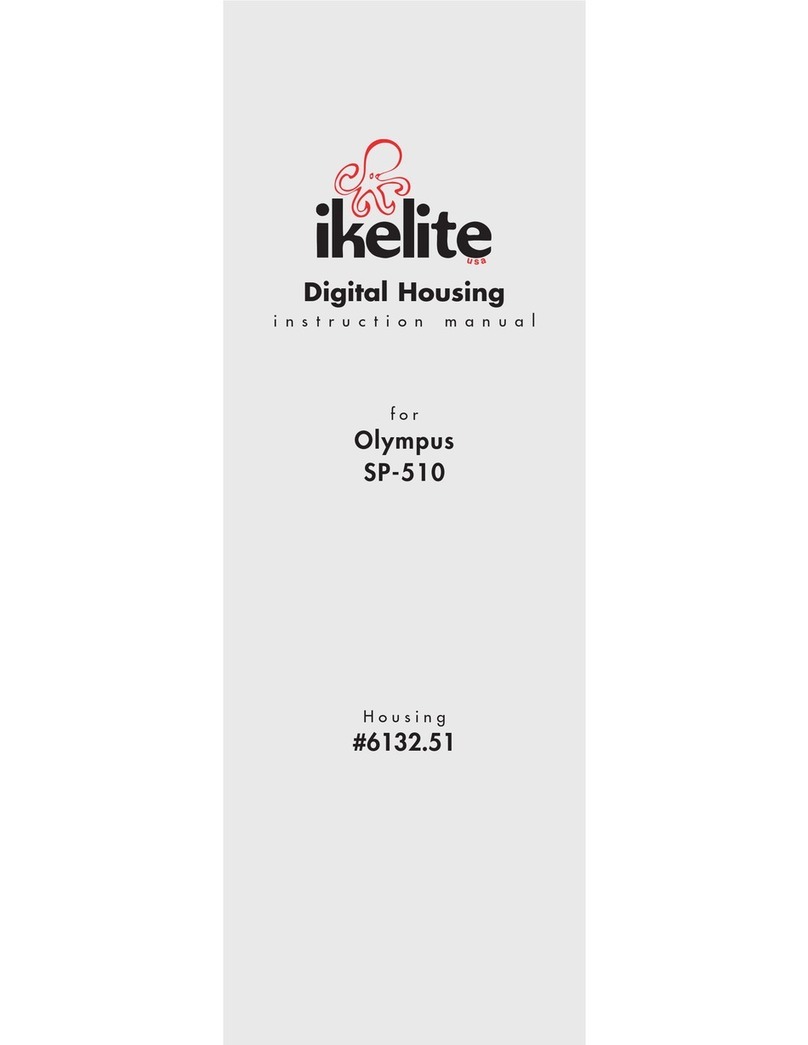
Ikelite
Ikelite 6132.51 User manual

Ikelite
Ikelite 6210.09 Sony DSC-WX9 Owner's manual
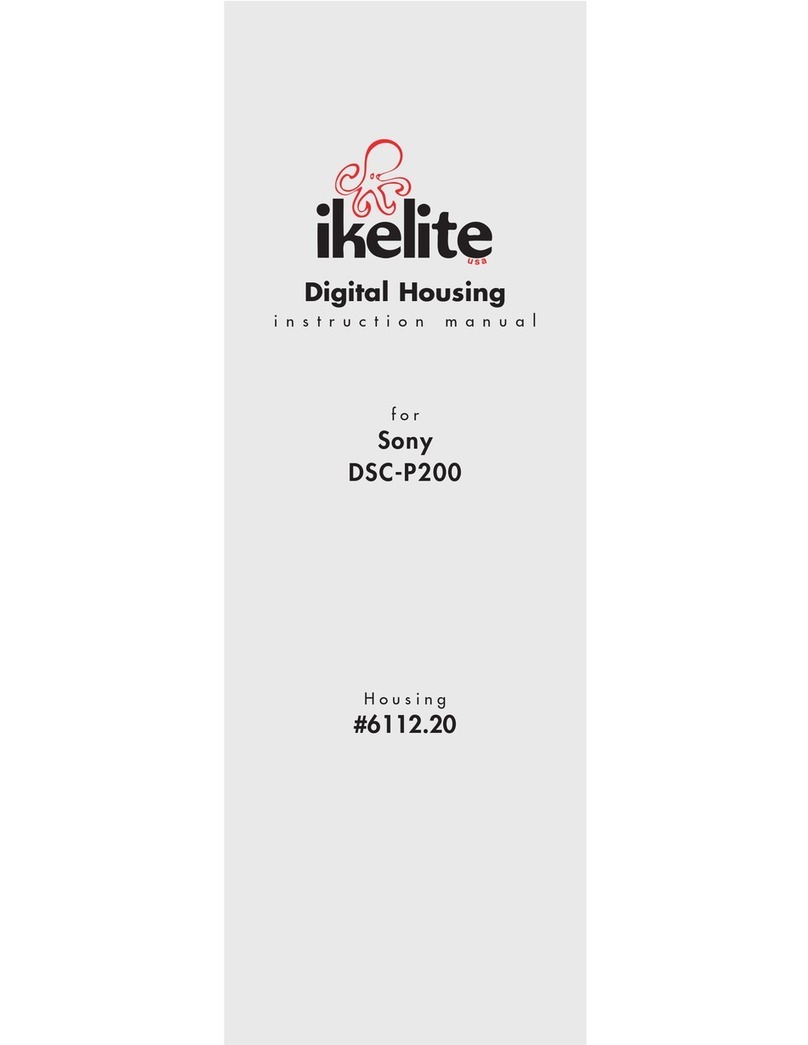
Ikelite
Ikelite DSC-P200 User manual
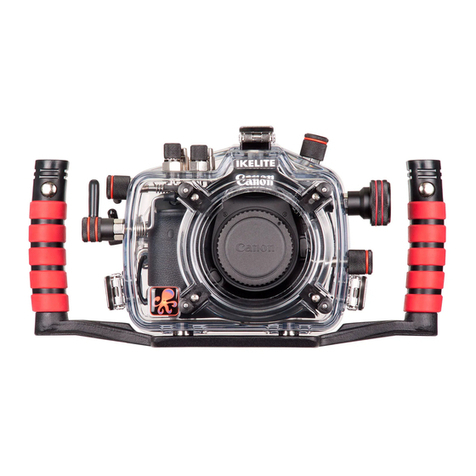
Ikelite
Ikelite 6871.08 User manual

Ikelite
Ikelite 46045 User manual
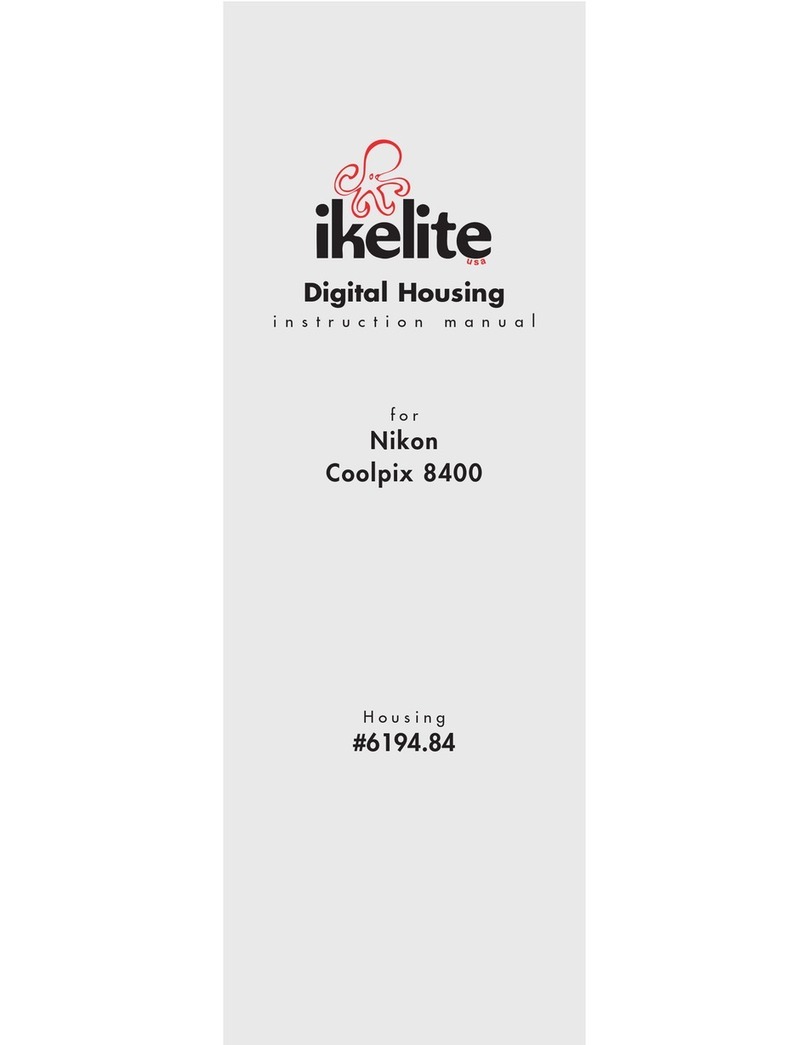
Ikelite
Ikelite Nikon Coolpix 8400 User manual
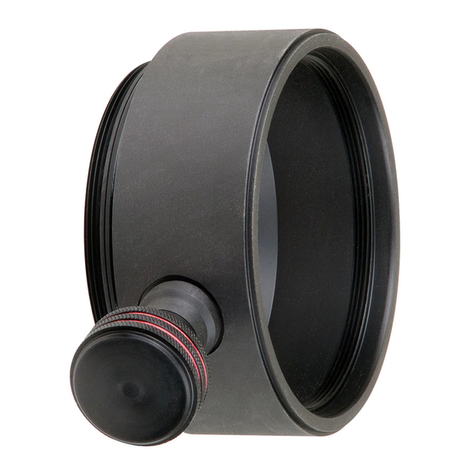
Ikelite
Ikelite 5510.75 User manual
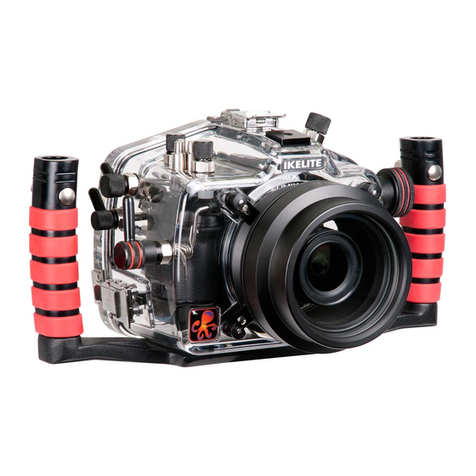
Ikelite
Ikelite 6860.03 User manual
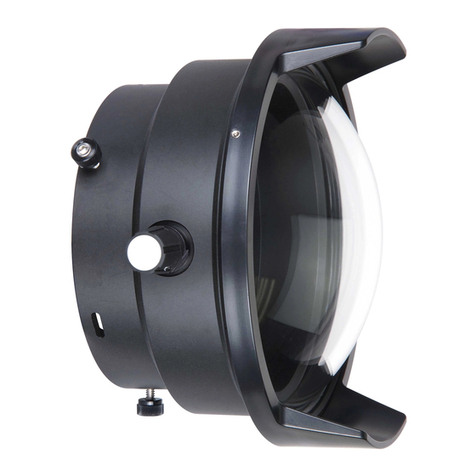
Ikelite
Ikelite DLM Dome Port with Zoom Extension .375 Quick start guide
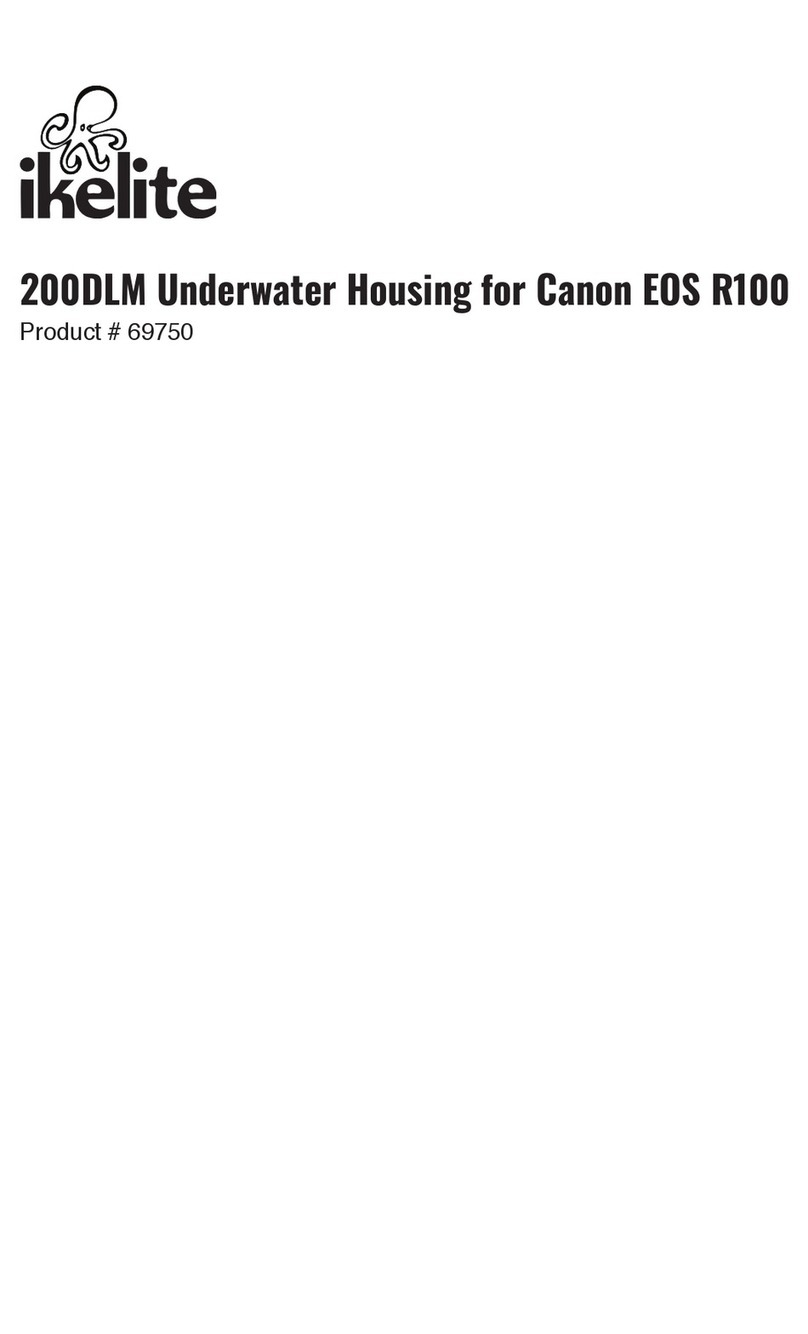
Ikelite
Ikelite 69750 User manual
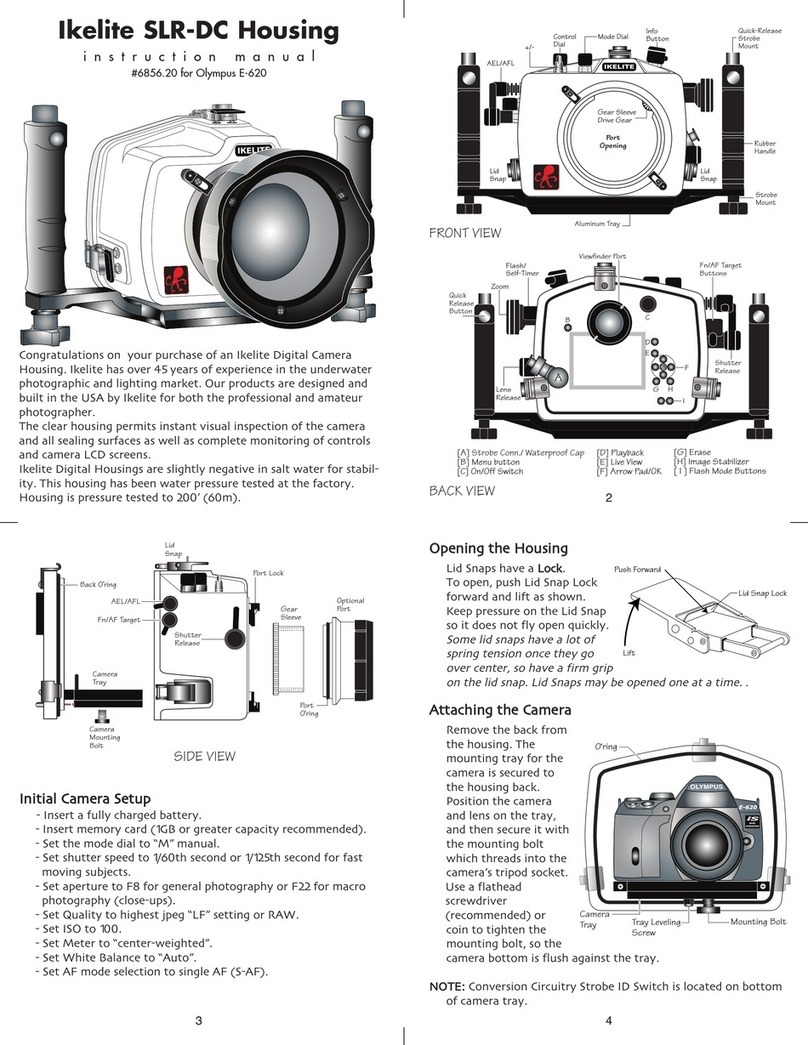
Ikelite
Ikelite SLR-DC Housing User manual

Ikelite
Ikelite 6801.52 User manual
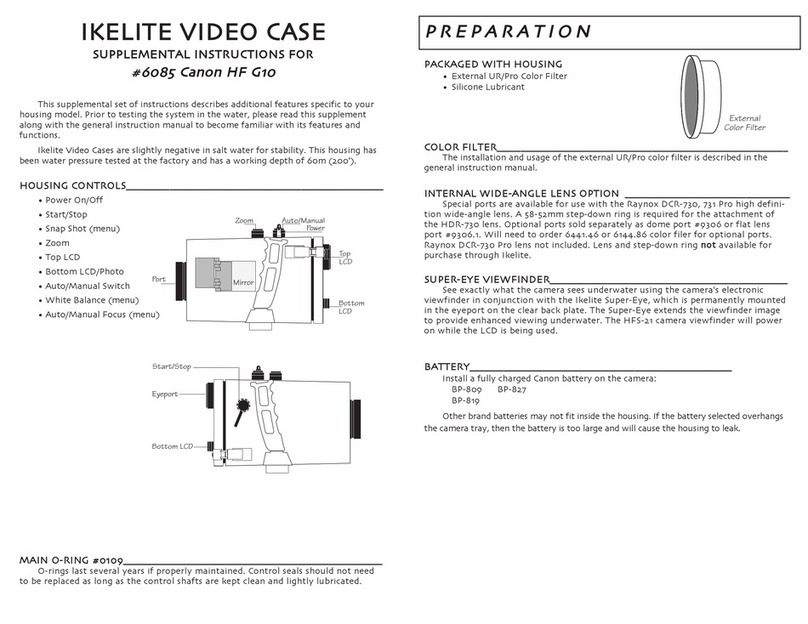
Ikelite
Ikelite 6085 Owner's manual

Ikelite
Ikelite MD200 Owner's manual
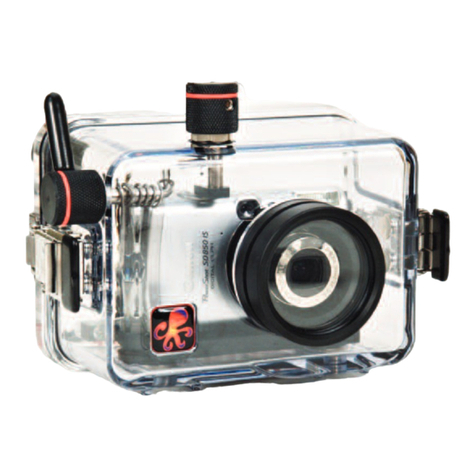
Ikelite
Ikelite Canon IXUS 950 IS User manual
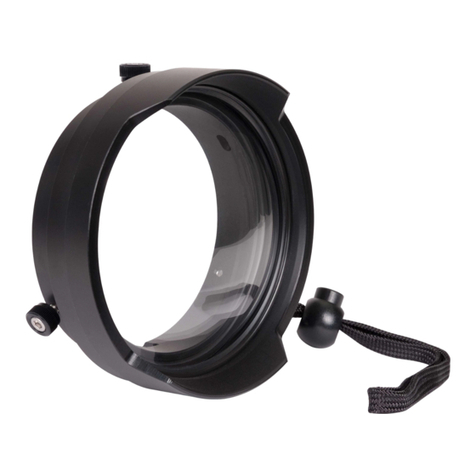
Ikelite
Ikelite WD-3 User manual

Ikelite
Ikelite 69540 User manual
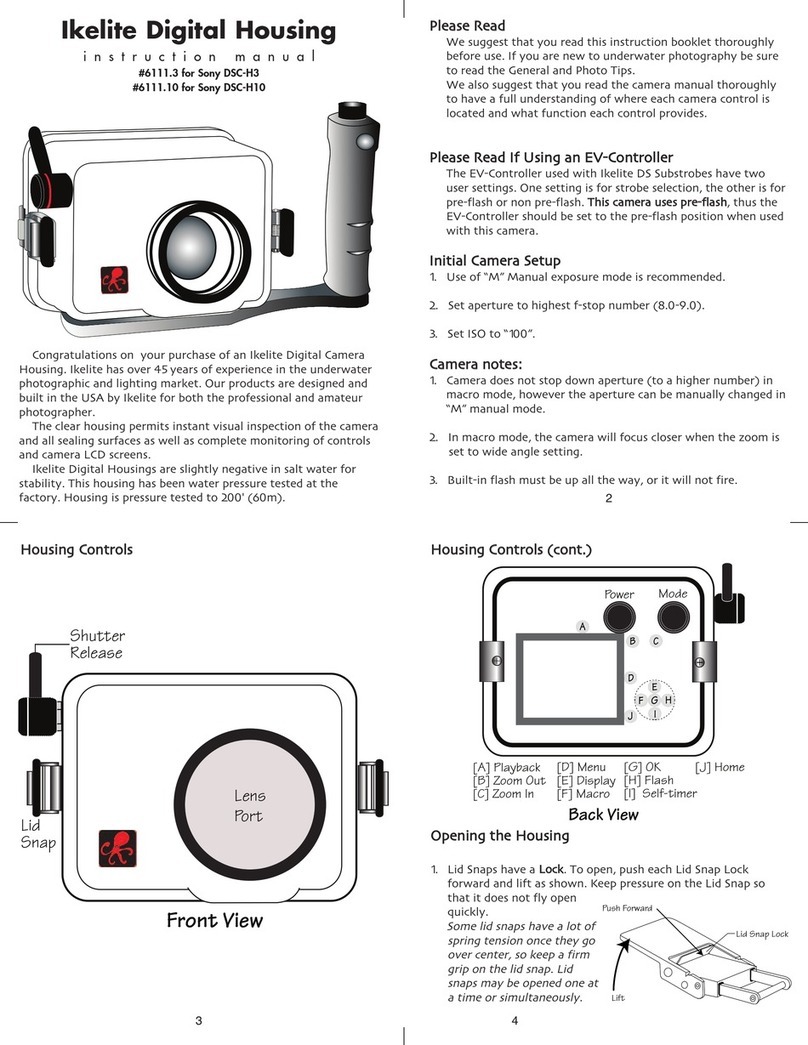
Ikelite
Ikelite DSC-H3 User manual
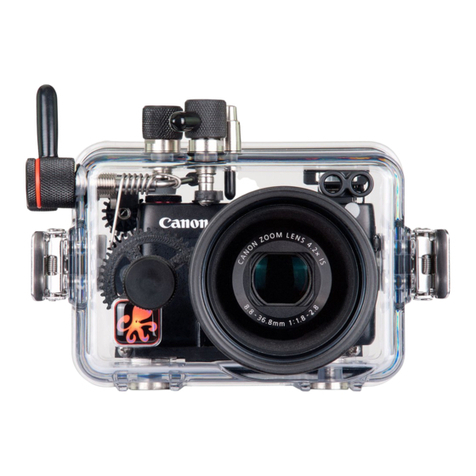
Ikelite
Ikelite 6146.07 User manual

Ikelite
Ikelite Canon A630 User manual
Popular Camera Accessories manuals by other brands

Calumet
Calumet 7100 Series CK7114 operating instructions

Ropox
Ropox 4Single Series User manual and installation instructions

Cambo
Cambo Wide DS Digital Series Main operating instructions

Samsung
Samsung SHG-120 Specification sheet

Ryobi
Ryobi BPL-1820 Owner's operating manual
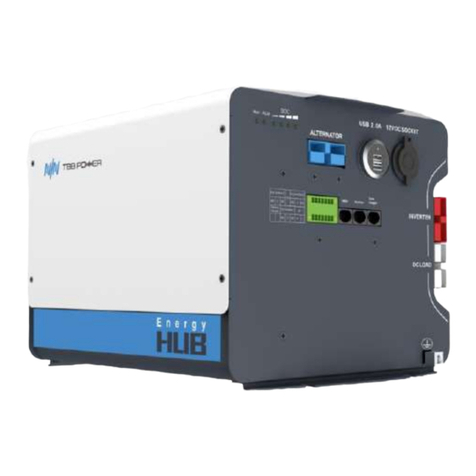
TBB power
TBB power Energy Hub EH128L user manual
